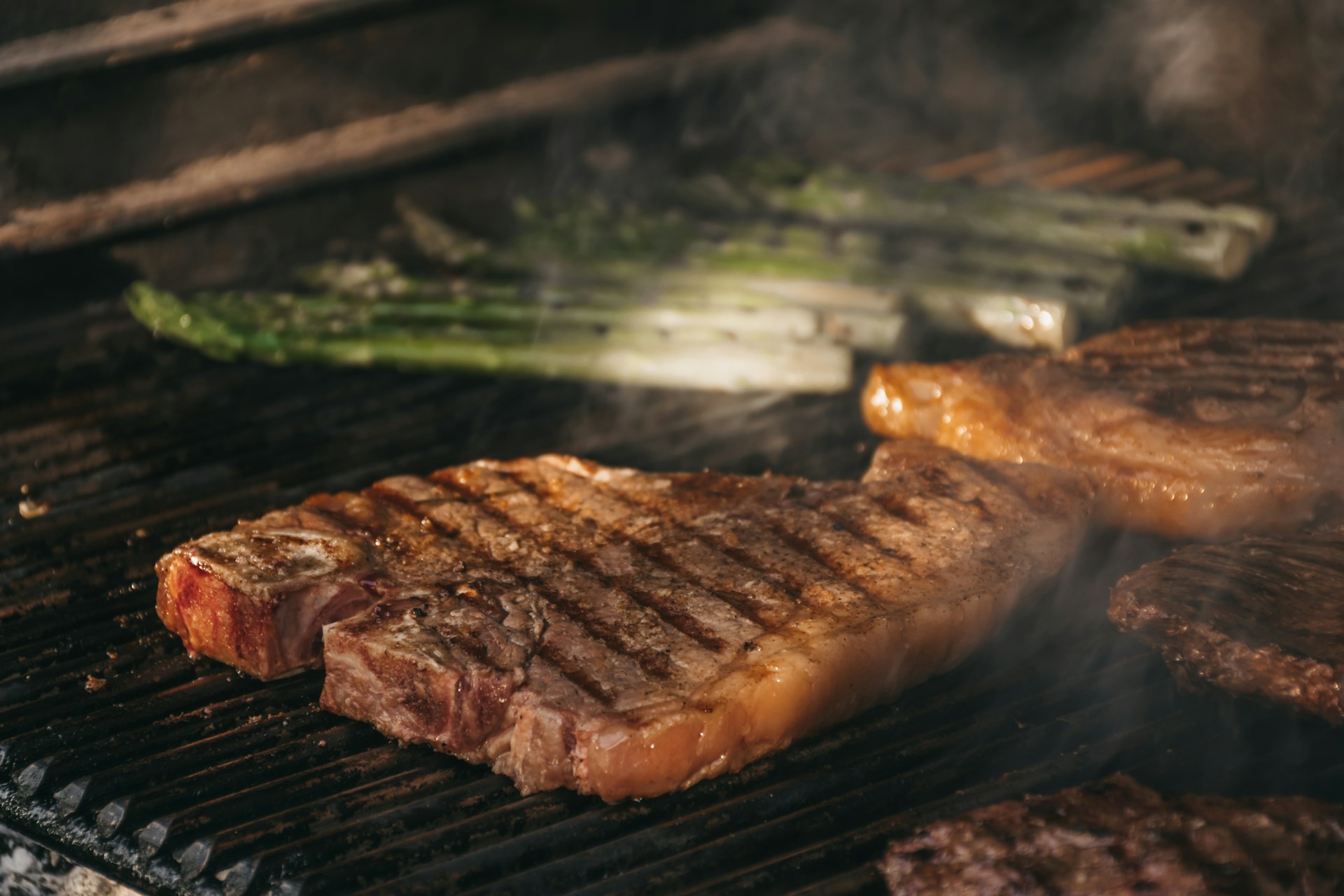Association of Nutritional Status, Diet, Coffee Drinking Habits and Blood Pressure of Airlangga University Students
Hubungan Status Gizi, Pola Makan, Kebiasaan Minum Kopi dan Tekanan Darah pada Mahasiswa Universitas Airlangga

Downloads
Background: Non-Communicable Diseases (NCD) is the leading cause of death in the world. One of the causes of death is heart and blood vessel disease. The American Heart Association (AHA) states that one in three people over 20 suffer from hypertension. Hypertension is a risk factor for blood vessels and heart disease. Hypertension risk factors are obesity, a high diet of calories, fat, and salt, a sedentary lifestyle, stress, and lack of exercise. The risk of obesity at a productive age can cause hypertension. UKM members tend to be more active and productive in their daily life than students who do not participate in UKM.
Objectives: To analyze the association of nutritional status, diet, coffee drinking habits, and blood pressure of UNAIR Students
Methods: The design of this study is a cross-sectional study of 80 student members of UKM UNAIR. Respondents were taken from the population based on the accidental sampling method. The independent variable in this study is blood pressure. The study's dependent variables are nutritional status, diet, and coffee-drinking habits. Data were analyzed using chi-square.
Results: There is a correlation between nutritional status (p=0.009), high sodium diet (p=0.022), coffee drinking habits (p=0.046), and blood pressure, and there is no correlation between high-calorie diet (p=0.663) and high-fat diet (p=0.215) and blood pressure.
Conclusions: There was a correlation between nutritional status, high sodium diet, and coffee-drinking habits with blood pressure in UNAIR Students.
Non-Communicable Diseases. https://www.who.int/news-room/fact-sheets/detail/noncommunicable-diseases.
Ministry of Health of Indonesia. Hypertension: Preventing and Controlling Hypertension To Avoid Damage to the Heart, Brain and Kidneys. (2014).
Republic of Indonesia Ministry of Health. Basic Health Research 2018. (2019).
Black & Hawks.Medical Surgical Nursing: Clinical Management of Expected Results. (Salemba Emban Patria, 2014).
Xiaoli, C. & Wang, Y. Tracking Blood Pressure from Childhood to Adulthood: A Systematic Review and Meta Regression Analysis. O'clock. Heart Assoc. 117, 3171–3180 (2008).
Par'i, HM. Nutrition Teaching Materials: Assessment of Nutritional Status. (RI Ministry of Health, 2017).
Khomsan, A. & Anwar, F. Healthy Is Easy. (Wisdom, 2008).
Carlson, W. First Book on Hypertension (High Blood Pressure) and Diet. (Keats, Pub Inc., 2016).
Come on. Thesis: Risk Factors for Hypertension in terms of Coffee Drinking Habits. (UNDIP, 2012).
Korneliani, K. & Meida, D. The Relationship of Obesity and Stress with the Incidence of Hypertension for Female Elementary School Teachers. J. Health. Mass. 7, 111–115 (2012).
Zamorano & Maria, L. Body Mass Index Associated with Elevated Blood Pressure in Mexican School-Aged Adolescents. Prev. med. (Baltim). 48, 543 – 548 (2009).
Kurniawaty, E. & Insan, AN. Effect of Coffee on Hypertension. med. J. Lampung Univ. 5, (2016).
Ririanty, M. Determinants of Jember University Student "Drinking Coffee" Behavior and Its Impact on Blood Pressure. (UNEJ, 2013).
Maulidiyah, F. Analysis of Contributing Factors to the Risk of Hypertension in Airlangga University Students' Surabaya. (Airlangga University, 2018).
Airlangga University. Guidelines for Implementing the UNAIR Achievement Credit System. (Airlangga University, 2016).
Chobanian, A.Vet al.Seventh Report of The Joint National Committee on Prevention, Detection, Evaluation, and Treatment of High Blood Pressure. (2003) doi:10.1161/01.HYP.0000107251.49515.c2.
Castelnuovo, A. Di, Di Giuseppe, R., Iacoviello, L. & De Gaetano, G. Consumption of Cocoa, Tea and Coffee and Risk of Cardiovascular Disease. euro. J. Intern. med. 23, 15–25 (2012).
Arisman. Textbook of Obesity Nutrition, Diabetes Mellitus, & Dyslipidemia Concepts, Theories, and Applicable Treatments. (EGC, 2014).
Akmal, H. & Puruhita, N. Differences in Intake of Energy, Protein, Physical Activity and Nutritional Status Between Elderly Participating and Not Participating in Elderly Fitness Exercise. (2012).
Sumayku, IM, Pandelaki, K. & Wongkar, M. The Relationship between Body Mass Index and Waist Circumference with Blood Pressure in Students of the Faculty of Medicine, University of Sam Ratulangi. J. e-CliniC 2, (2014).
Puspitasari, AA Risk Factors for Hypertension at the Age of 20-44 Years at the Wireuna Health Center, Palu City. J. Nutrition and Health. 2, 67–70 (2018).
Think, BS Hypertension: Comprehensive Management. (Airlangga University Press, 2015).
Pratiwi, OM & Wibisana, AA Relationship between Diet and Hypertension in the Elderly in Blokseger Hamlet, Tegalsari District, Banyuwangi Regency. J. IKESMA 14, (2018).
Aristi, D. LA, Rasni, H., Susumaningrum, LA, Susanto, T. & Siswoyo, S. The Relationship between Consumption of High Sodium Foods and the Incidence of Hypertension in Farm Workers in the Work Area of the Panti Health Center, Jember Regency. Bull. Researcher. Sist. healthy. 23, 53–60 (2020).
Huzaipah, AA Relationship between Diet and Physical Activity with the Incidence of Hypertension in Young Adults (26-45 Years) at the Arifin Achmad Regional General Hospital, Riau Province, 2018. (University of North Sumatra, 2019).
Martiani, A. & Lelyana, R. Risk Factors for Hypertension in terms of Coffee Drinking Habits (Case Study in the Working Area of the Ungaran Health Center in January-February 2012). J.Nutr. Col. 1, 78–85 (2012).
Chandra, VV & Halim, S. Effect of Coffee on Blood Pressure and Pulse of Tarumanagara University Students. Tarumanagara Med. J. 3, 221–225 (2020).
Bistara, DN & Kartini, Y. The Relationship between Coffee Consuming Habits and Blood Pressure in Young Adults. J. Health. Vocational 3, (2018).
Copyright (c) 2023 Amerta Nutrition

This work is licensed under a Creative Commons Attribution-ShareAlike 4.0 International License.
AMERTA NUTR by Unair is licensed under a Creative Commons Attribution-ShareAlike 4.0 International License.
1. The journal allows the author to hold the copyright of the article without restrictions.
2. The journal allows the author(s) to retain publishing rights without restrictions
3. The legal formal aspect of journal publication accessibility refers to Creative Commons Attribution Share-Alike (CC BY-SA).
4. The Creative Commons Attribution Share-Alike (CC BY-SA) license allows re-distribution and re-use of a licensed work on the conditions that the creator is appropriately credited and that any derivative work is made available under "the same, similar or a compatible license”. Other than the conditions mentioned above, the editorial board is not responsible for copyright violation.












































